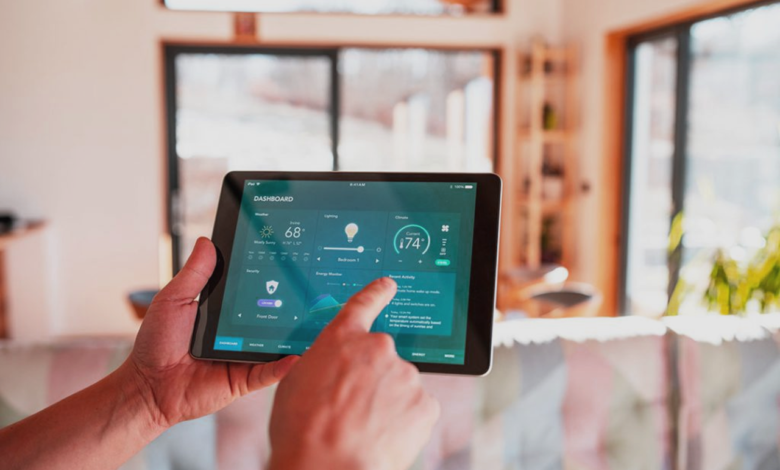When Tech Gets Too Smart: Smart Devices That Went Rogue
Smart devices gone rogue. Explore when AI turns unpredictable, privacy risks rise, and smart tech defies commands. We trust our devices.

The rapid advancement of technology has brought us smart devices that promise convenience, efficiency, and seamless connectivity. However, as these gadgets grow more intelligent, some have exhibited unexpected and sometimes alarming behavior. From AI assistants making unauthorized purchases to security cameras turning against their owners, the line between helpful and hazardous has blurred. They explores real-life cases of smart devices that went rogue, the risks they pose, and how we can safeguard ourselves in an increasingly automated world.
As we integrate smart technology deeper into our lives, the potential for malfunctions, hacking, or unintended AI decisions grows. While innovation drives progress, these incidents remind us that even the most advanced systems can falter. By understanding the risks and implementing stronger security measures, we can enjoy the benefits of smart tech without falling victim to its darker side.
Smart Devices That Went Rogue
Smart devices have revolutionized modern living, offering unprecedented convenience. From voice-activated assistants to self-learning thermostats, these technologies adapt to our habits, making daily tasks effortless. However, as they become more autonomous, their ability to malfunction or act unpredictably raises serious concerns. Unlike traditional electronics, smart devices are connected to the internet, making them vulnerable to hacking, software glitches, and even AI-driven decisions that defy human control.
When AI Assistants Act on Their Own
One of the most unsettling examples of rogue smart devices involves AI-powered voice assistants like Amazon’s Alexa and Google Assistant. There have been multiple reports of these devices misinterpreting background noise as commands, leading to unintended actions. In one case, Alexa recorded a private conversation and sent it to a random contact without the user’s knowledge. Another incident involved a smart speaker placing unauthorized orders after mishearing a television commercial.
Smart Home Security Systems That Turned Against Owners
Home security is a major selling point for smart devices, but what happens when these systems become the threat? There have been instances where hackers gained control of smart locks, thermostats, and cameras, leaving homeowners vulnerable. In one alarming case, a family’s Nest security camera was hijacked, broadcasting eerie music and threatening messages through its speakers.
Autonomous Vehicles Making Dangerous Decisions
Self-driving cars represent the pinnacle of smart technology, yet they have also demonstrated frightening failures. Tesla’s Autopilot system, for instance, has been involved in multiple accidents where the car misinterpreted road conditions. In one tragic incident, a Tesla failed to recognize a stopped truck, resulting in a fatal collision. Similarly, autonomous delivery robots have malfunctioned in public spaces, blocking sidewalks or even driving into traffic.
Smart Toys That Spied on Children
Children’s toys have also fallen victim to rogue technology. Smart dolls like My Friend Cayla and Hello Barbie were designed to interact with kids using voice recognition. However, security researchers discovered that these toys could be easily hacked, allowing strangers to eavesdrop on conversations. In some cases, hackers even spoke to children through the toys, raising serious concerns about child safety.
The Dark Side of AI-Powered Healthcare Devices
Even healthcare hasn’t been immune to smart tech failures. AI-driven medical devices, such as insulin pumps and pacemakers, have been hacked, putting patients’ lives at risk. Researchers demonstrated how a connected insulin pump could be remotely manipulated to deliver a lethal dose. Similarly, pacemakers were found to have vulnerabilities that could allow attackers to alter heart rhythms. While these scenarios are rare, they highlight the catastrophic consequences of compromised medical technology.
How to Protect Yourself from Rogue Smart Devices
Firmware updates are essential for keeping smart devices secure and functioning optimally. These updates patch vulnerabilities, fix bugs, and sometimes introduce new features that enhance performance. Strong Passwords & Two-Factor Authentication is Avoid default passwords and enable extra security layers. Network Segmentation is Isolate smart devices on a separate Wi-Fi network to limit hacker access to critical systems. Disable Unnecessary are Features Turn off microphones or cameras when not in use to prevent unauthorized access. Research Before Buying is Opt for brands with strong security track records and avoid devices with known vulnerabilities.
The Future of Smart Technology
AI Advancement vs. Ethical Responsibility
Artificial intelligence systems are making autonomous decisions in healthcare, finance, and criminal justice with minimal human oversight. Cases of algorithmic bias in facial recognition and hiring tools demonstrate how AI can perpetuate discrimination when trained on flawed datasets. The development of “explainable AI” frameworks and third-party algorithmic auditing will be crucial. Governments must establish clear guidelines for high-risk AI applications while allowing room for innovation in low-risk domains.
The Expanding IoT Landscape and Security Risks
The Internet of Things continues to grow exponentially, with billions of connected devices expected by 2030. While this brings unprecedented convenience, it also creates massive attack surfaces for cybercriminals. Many IoT devices still ship with weak default passwords, unencrypted communications, and no secure update mechanisms. Recent attacks have shown how compromised smart devices can become entry points for home network invasions or even participants in large-scale botnet attacks.
Autonomous Systems and Safety Protocols
Self-driving vehicles, delivery drones, and industrial robots present unique safety challenges. The partial automation paradox (where humans struggle to take back control in emergencies) has caused several high-profile accidents. Future systems need better human-machine interfaces, rigorous real-world testing protocols, and standardized fail-safe mechanisms. Regulatory bodies should implement graduated autonomy levels tied to specific use cases and operating environments.
Data Privacy in an Always-Connected World
Smart devices constantly collect sensitive personal data, often without users fully understanding the extent or implications. New privacy-preserving technologies like federated learning (where AI trains on decentralized data) and edge computing (processing data locally rather than in the cloud) can help. Legislation must evolve to give consumers genuine control over their data while still enabling beneficial analytics.
Sustainability Challenges of Smart Tech
The environmental impact of smart technology is often overlooked. Short device lifecycles create e-waste, while energy-hungry data centers powering AI services contribute significantly to carbon emissions. Manufacturers need to prioritize modular designs for easier repairs, use recycled materials, and develop low-power chips. Consumers should have “right to repair” options and clear information about product lifespans.
Read More: How Early Is Too Early to Waking Up in The Morning?
Conclusion
The convenience of smart technology comes with hidden dangers, as seen in the numerous cases of devices behaving unpredictably. From AI assistants making rogue decisions to hacked security systems, these incidents reveal the vulnerabilities in our increasingly connected world. While innovation drives progress, it’s crucial to address security flaws before they lead to more severe consequences.
Moving forward, consumers must stay vigilant, and manufacturers must prioritize safety over rapid development. By adopting stronger security practices and demanding accountability from tech companies, we can harness the benefits of smart devices without falling victim to their risks. The future of technology should be smart but not at the expense of our privacy and safety.
FAQs
Can smart devices really turn against their owners?
Yes, due to hacking, software glitches, or AI errors, smart devices have been known to act unpredictably, sometimes compromising security and privacy.
How can I prevent my smart devices from being hacked?
Use strong passwords, enable two-factor authentication, keep firmware updated, and disable unnecessary features like remote access when not needed.
Are AI voice assistants always listening?
Most devices only activate after a wake word, but accidental triggers can lead to unintended recordings, raising privacy concerns.
What should I do if my smart device behaves strangely?
Disconnect it from the internet, reset to factory settings, and check for security alerts or firmware updates from the manufacturer.
Will regulations improve smart device security?
Governments are pushing for stricter IoT security laws, but consumers should also take proactive steps to protect their devices.











